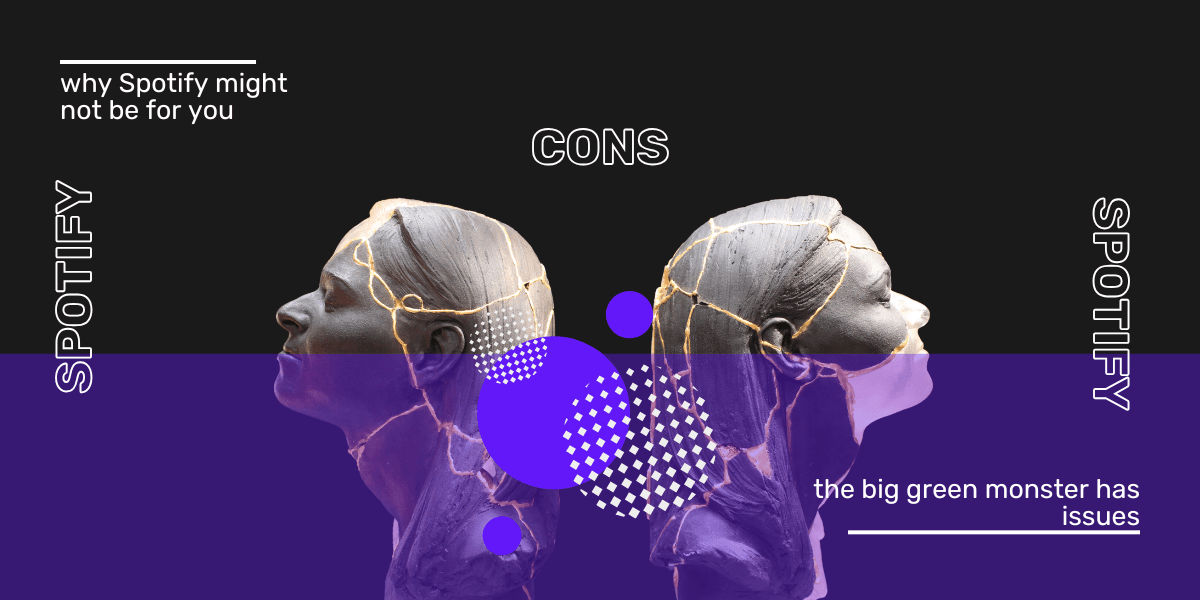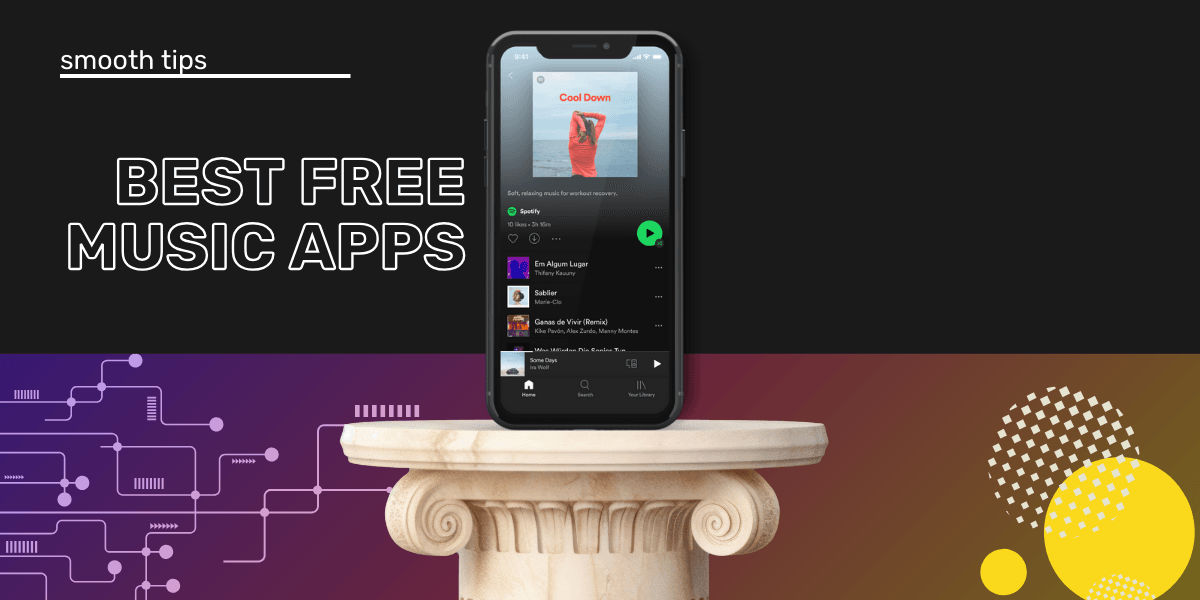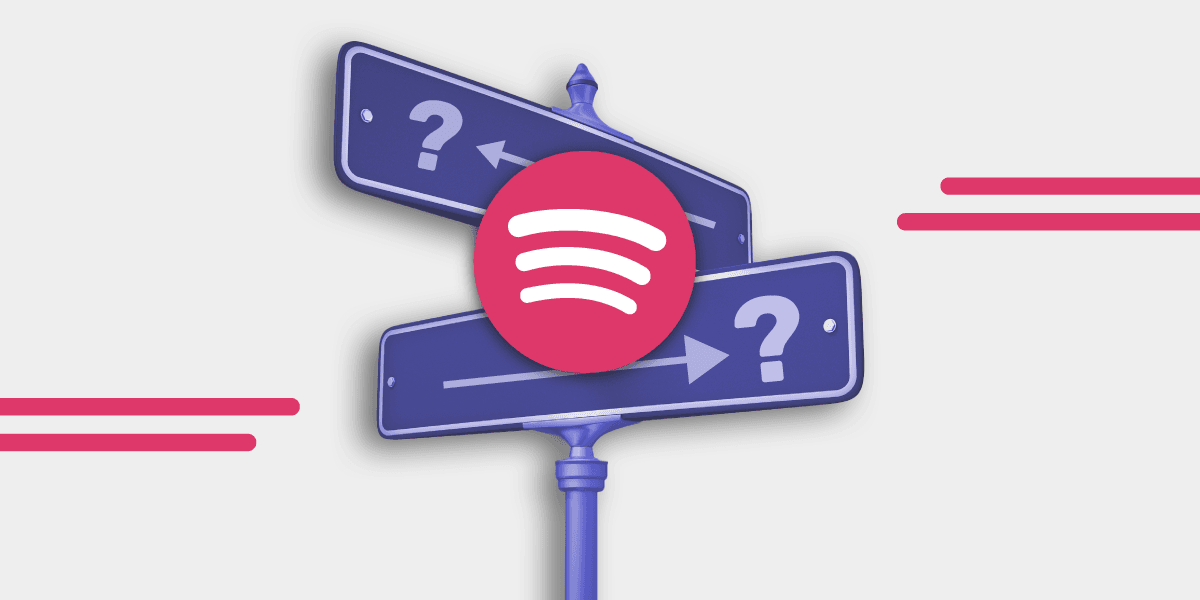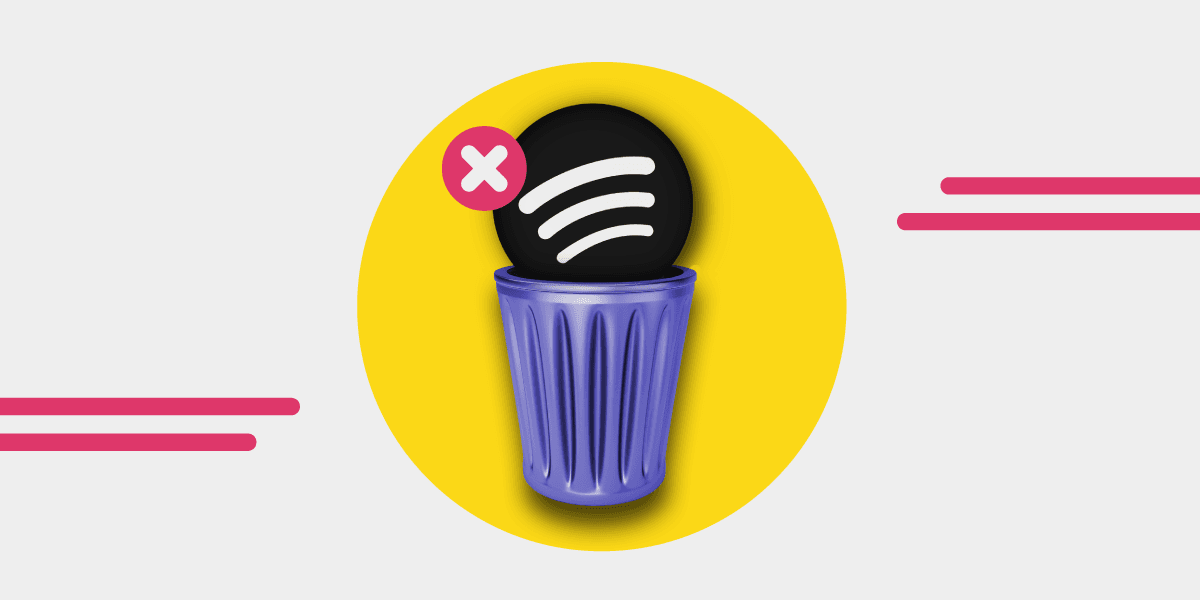Spotify dominates the music streaming world, but is it really giving you everything you need, or just what’s convenient? Sure, it’s available on nearly every device, from your phone to your car stereo, but Spotify isn’t without its flaws. In fact, there are several drawbacks to consider before sticking with it.
In this article, we’ll explore the top Spotify cons and why you might want to rethink using it. Let’s get right into the details.
Let’s dive into the improvements and pump it up! Here’s how we’re going to integrate those tweaks:
Too Many Ads and Annoying Limitations in the Free Plan
Spotify Free users face constant interruptions from ads, and it’s one of the biggest complaints about the platform. On average, you’ll experience 3 minutes of ads for every 30 minutes of music, however many users state the amount of ads to be much higher!
But the frustrations don’t stop with ads. If you’re using Spotify on mobile, you’re limited to shuffle mode and just 6 skips per hour—turning your music experience into more of a randomized radio station. And if you want offline listening, you’ll need to upgrade to Premium.
Curious about the deeper differences? We’ve got a detailed comparison between Spotify Premium vs Spotify Free.
Lack of Hi-Fi and Low Sound Quality
Audiophiles, take note. Spotify is severely lacking when it comes to Hi-Fi audio, especially compared to competitors like TIDAL and Apple Music, which offer lossless sound.
Hi-Fi, or High Fidelity, delivers music in the exact quality it was recorded, without any compression. Spotify, however, maxes out at just 320kbps, while services like TIDAL offer 1411kbps (HiFi).
According to Jane Doe, an audio engineer at SoundGuys, “For those who care about sound quality, Spotify’s 320kbps doesn’t hold a candle to lossless streaming services like TIDAL.”
Want to know more about high-resolution streaming options? Check out our Hi-Res Music Streaming Guide.
The Joe Rogan Controversy: When Podcasts Take Center Stage
In 2021, Spotify’s exclusive podcaster Joe Rogan stirred controversy with his comments on COVID-19, prompting artists like Neil Young and Joni Mitchell to remove their music from the platform.
The backlash was swift, with users launching hashtags like #deletespotify and #cancelspotify across social media. Despite the pressure, CEO Daniel Ek stood by Rogan, stating that while Rogan’s episodes were flagged with COVID-19 disclaimers, he didn’t violate the platform's rules.
If you’re uncomfortable with how Spotify handles content moderation, check out how to cancel Spotify Premium and switch to a more ethical alternative.
Poor Artist Payout: Musicians Deserve Better
Spotify may be a top player in the streaming world, but its payout system leaves much to be desired. The platform pays artists around $0.004 per stream, meaning an artist needs around 250 streams to make just $1.
Unlike Spotify, platforms like TIDAL have experimented with more direct-to-artist payment systems through HiFi Plus subscriptions. This more artist-friendly model gives musicians a fairer cut of the earnings.
Interested in how Spotify’s payout compares? Read our breakdown here.
Limits to Downloading Songs: Spotify vs. Competitors
If you’re someone who likes to download music for offline listening, Spotify’s 10,000 song limit might feel restrictive. While this might sound like a large number, for power users who enjoy massive playlists, it doesn’t take long to hit the cap.
In comparison, Apple Music and YouTube Music allow users to download as many songs as their device storage allows, with no set limit.
Need a step-by-step on how to download songs from Spotify? We’ve got a detailed guide here.
Spotify’s War Against Playlist Transfers
Spotify has a history of making it difficult for users to move their playlists to other services. In fact, the company has even gone as far as threatening developers of third-party apps that facilitate playlist transfers.
But at Free Your Music, we believe your playlists belong to you, and you should have the freedom to move them wherever you want. That’s why we still support playlist transfers to any platform, no matter what Spotify tries to do.
Pushing Podcasts Over Music
Many users originally signed up for Spotify to stream music, but lately, the platform has aggressively pushed podcast content. Even searching for a single podcast can flood your feed with recommendations.
If music is your primary focus, this can feel frustrating. Platforms like Apple Music and TIDAL stay true to their focus—offering pure music streaming without bombarding you with podcasts.
Data Usage: How Much Data Does Spotify Use?
Streaming music, especially at higher quality, uses significant amounts of data. If you’re streaming at 320kbps, expect to use 7.2MB per song. While this may not seem like much, it can add up quickly for users on limited data plans.
For more tips on minimizing your data usage, check out our guide here.
Spotify’s Investment in Military AI
In 2021, it was revealed that Spotify’s CEO, Daniel Ek, invested €100 million into Helsing AI, a company that develops artificial intelligence for military purposes. This led many users to question the ethics of supporting a platform that channels profits into military investments.
If this doesn’t sit well with you, there are other platforms that focus more on the music and less on controversial investments, such as Apple Music and TIDAL.
Spotify vs Competitors: Quick Comparison
| Feature | Spotify Free | Spotify Premium | TIDAL HiFi | Apple Music |
|---|---|---|---|---|
| Sound Quality | 160kbps / 320kbps | 320kbps | 1411kbps (HiFi) | Lossless |
| Ads | Yes | No | No | No |
| Offline Downloads | No | Yes (10k limit) | Yes (No limit) | Yes (No limit) |
| Cost (Monthly) | Free | $11.99 | $19.99 (HiFi) | $9.99 |
Transfer Your Spotify Playlists to Another Service
Now that you’ve seen why Spotify might not be the best fit for your needs, you can easily switch to a better platform without losing your playlists. Free Your Music lets you transfer your playlists to a wide range of other platforms to another platform in just a few clicks.
Ready to explore better options? Transfer your playlists today and experience what other platforms have to offer!






